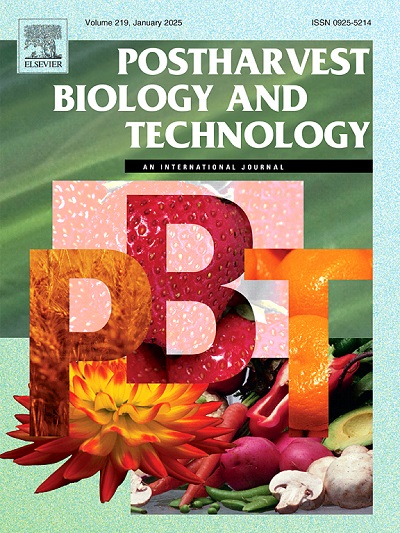Non-destructive optical characterization of fruit and vegetables by non-contact time-resolved reflectance spectroscopy
IF 6.4
1区 农林科学
Q1 AGRONOMY
引用次数: 0
Abstract
A non-contact time-resolved reflectance spectroscopy (TRS) laboratory prototype is presented, which non-invasively probes highly scattering media, retrieving their bulk absorption and reduced scattering coefficients. The performance of the prototype was assessed according to an established procedure for the characterization of diffuse optics devices. Results comparable with those obtained by state-of-the-art TRS devices were achieved for absorption coefficients up to 0.4 cm−1 and reduced scattering coefficients up to 15 cm−1. 150 ‘Abate Fetel’ pears were probed, sorted into three maturity classes based on their absorption coefficient at 671 nm () retrieved by a state-of-the-art TRS device. After ninety days of storage at 1 °C, the non-contact prototype monitored the fruit throughout seven days of shelf-life at 20 °C, successfully distinguishing less, medium, and more mature pears, and detecting the expected decrease of . This prototype, featuring a customized collection optical system, performs non-contact measurements at approximately 10 cm distance from the sample. Thus, it represents a step towards application of TRS technology at industry level in the horticultural sector.
求助全文
约1分钟内获得全文
求助全文
来源期刊

Postharvest Biology and Technology
农林科学-农艺学
CiteScore
12.00
自引率
11.40%
发文量
309
审稿时长
38 days
期刊介绍:
The journal is devoted exclusively to the publication of original papers, review articles and frontiers articles on biological and technological postharvest research. This includes the areas of postharvest storage, treatments and underpinning mechanisms, quality evaluation, packaging, handling and distribution of fresh horticultural crops including fruit, vegetables, flowers and nuts, but excluding grains, seeds and forages.
Papers reporting novel insights from fundamental and interdisciplinary research will be particularly encouraged. These disciplines include systems biology, bioinformatics, entomology, plant physiology, plant pathology, (bio)chemistry, engineering, modelling, and technologies for nondestructive testing.
Manuscripts on fresh food crops that will be further processed after postharvest storage, or on food processes beyond refrigeration, packaging and minimal processing will not be considered.
 求助内容:
求助内容: 应助结果提醒方式:
应助结果提醒方式:


